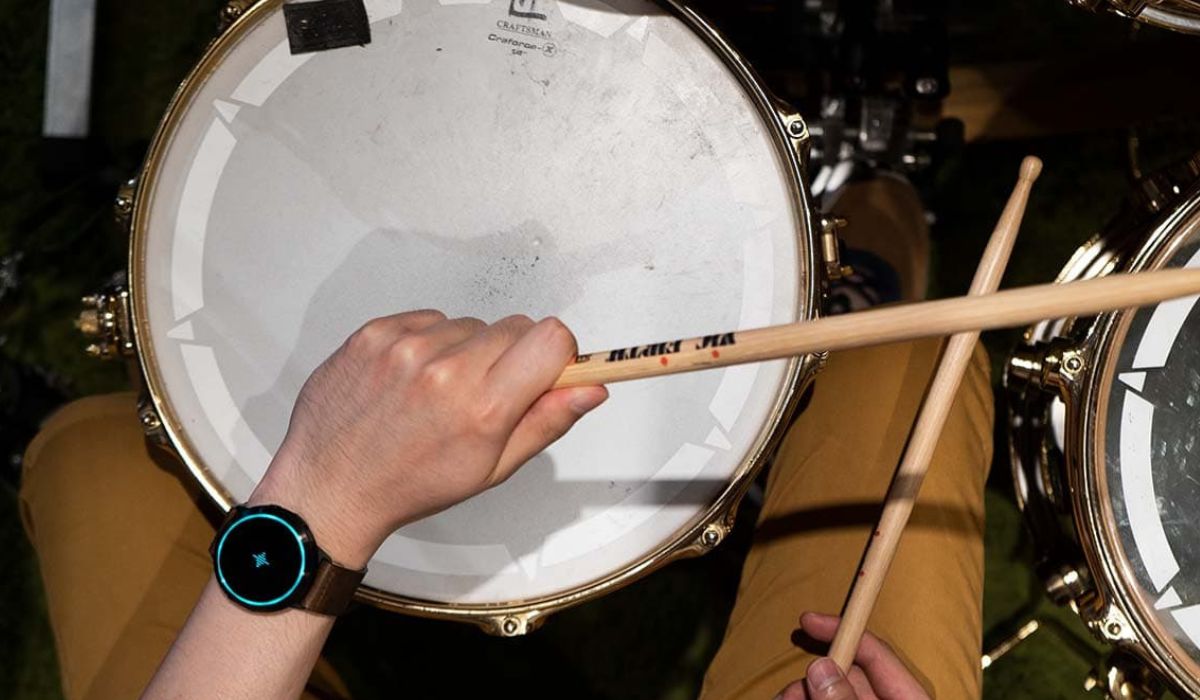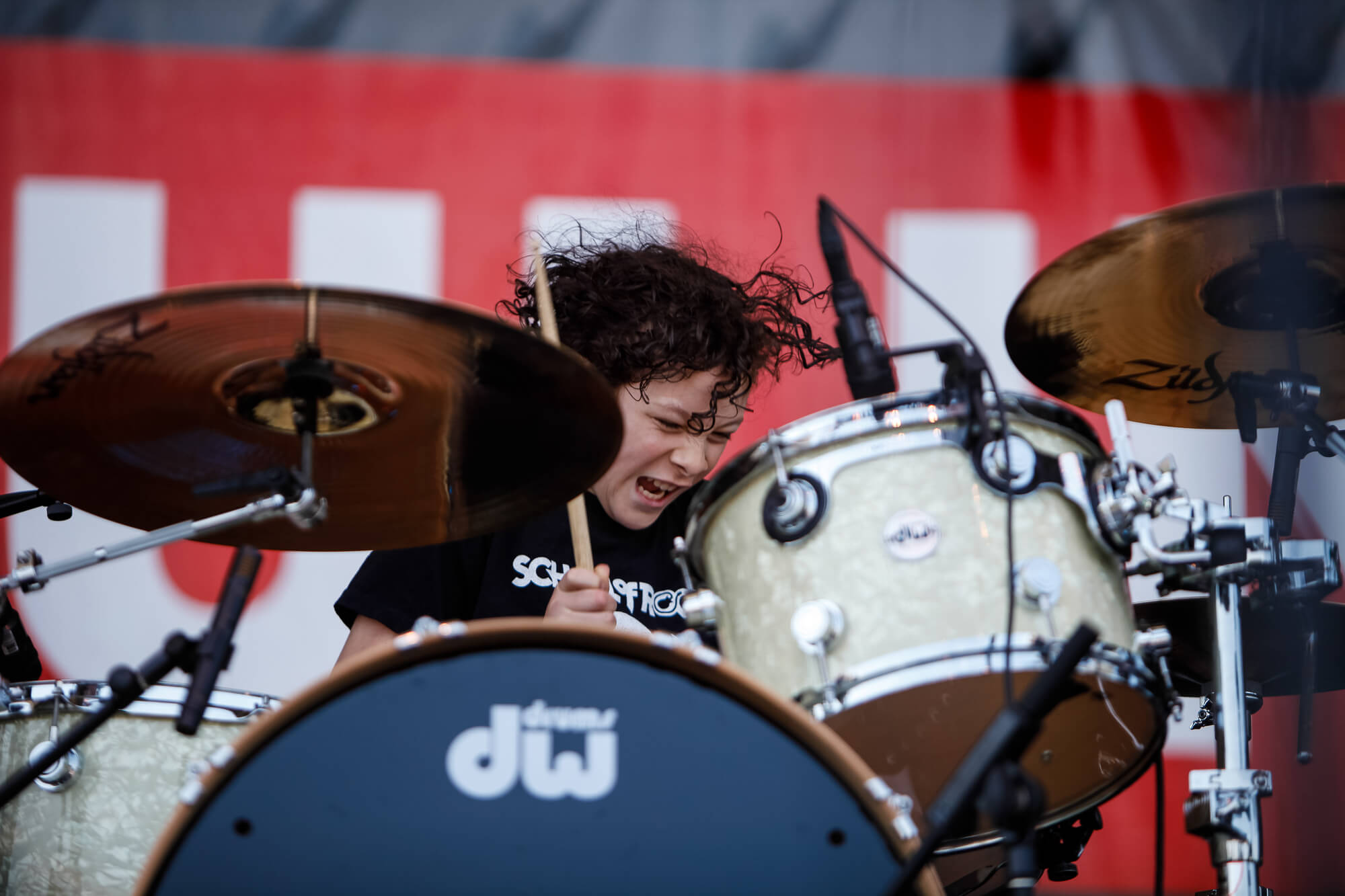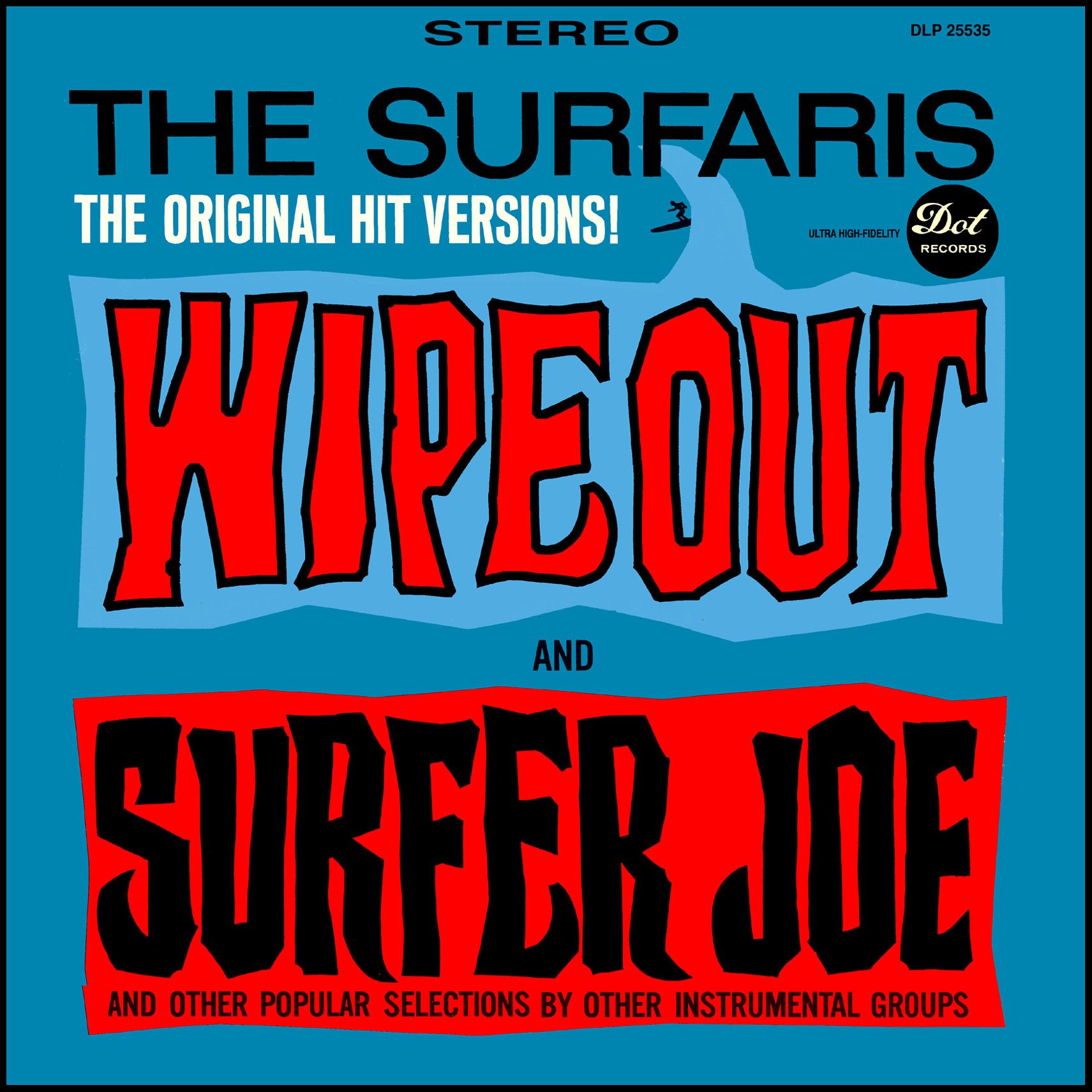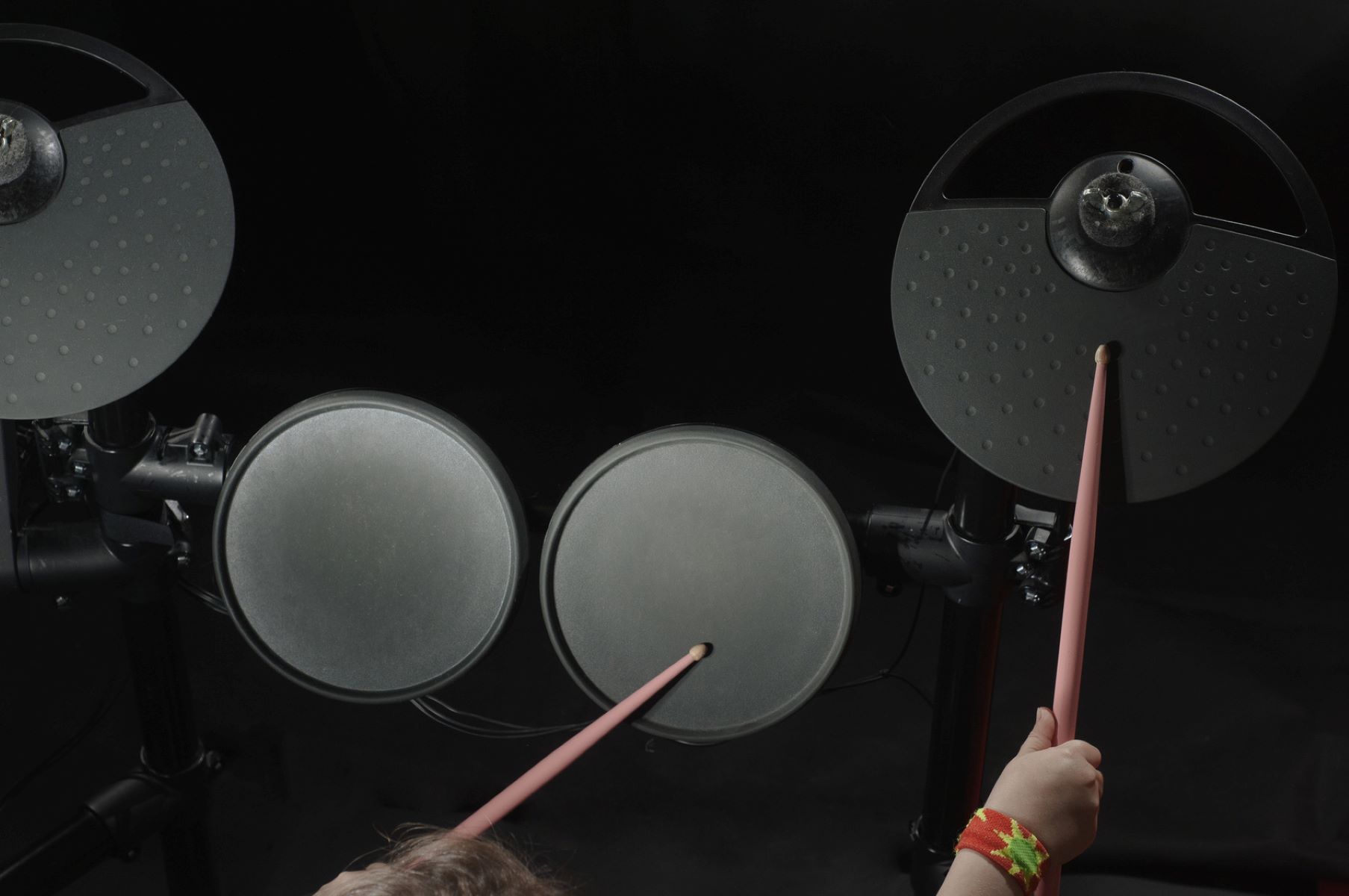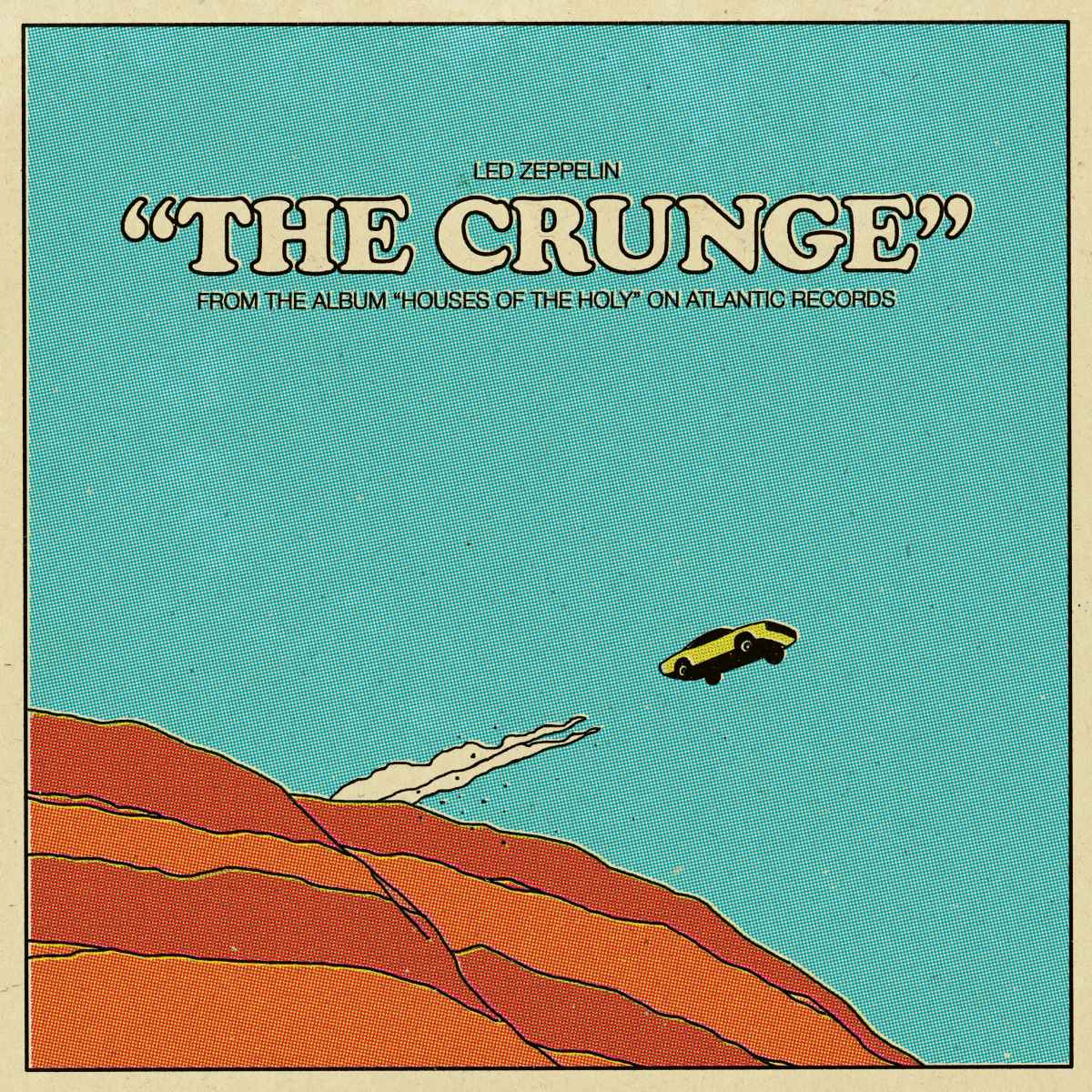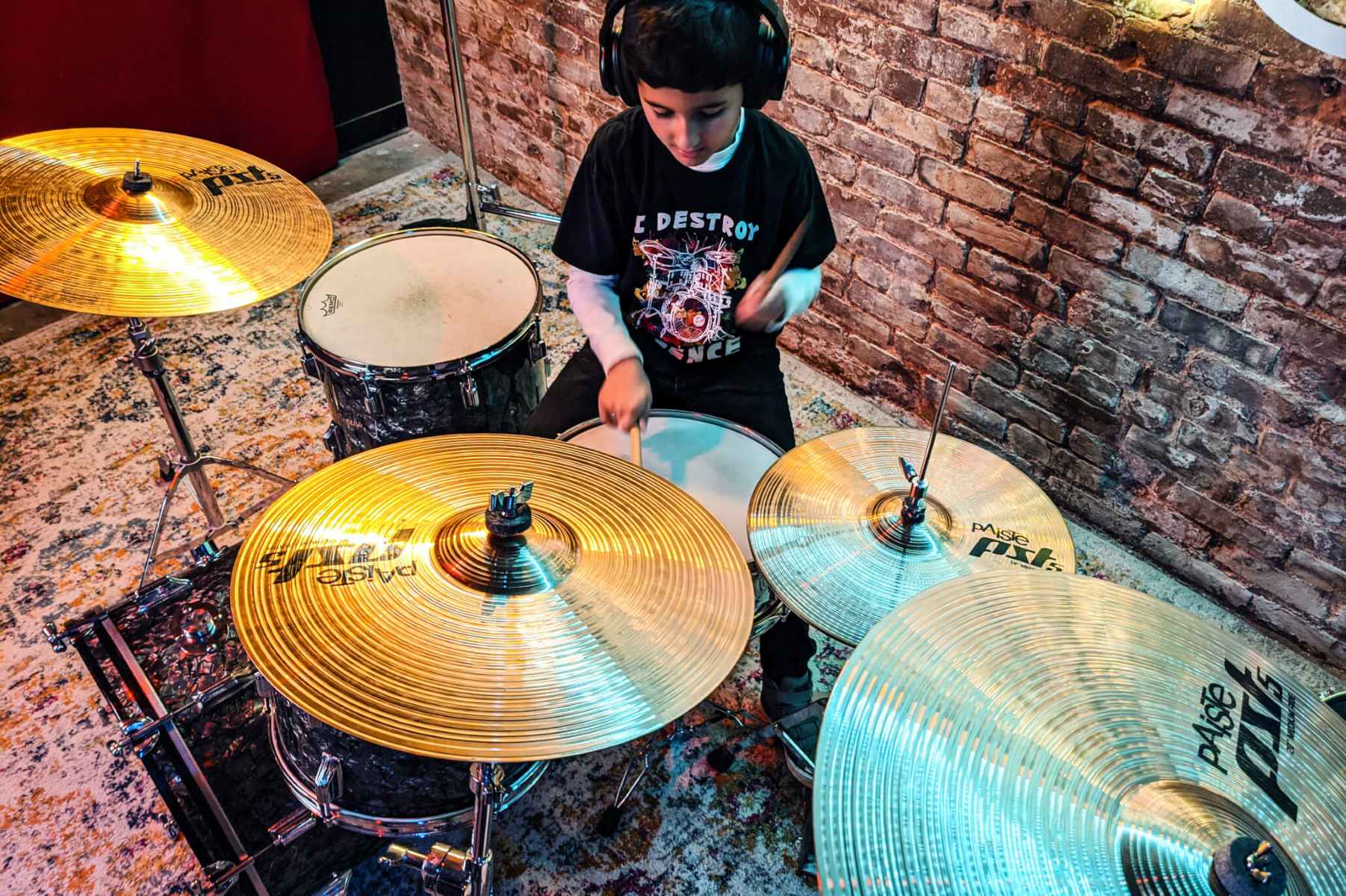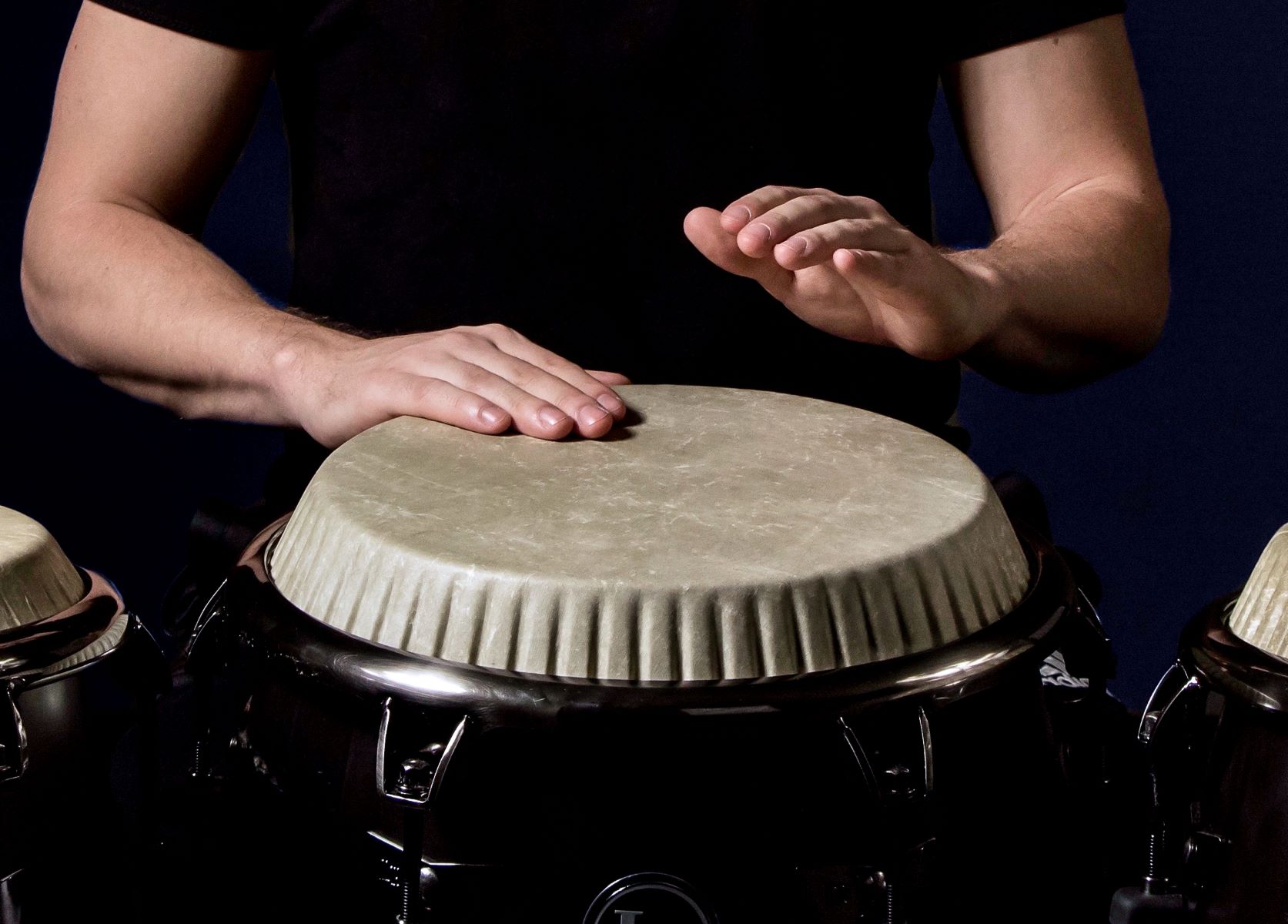Home>Instruments>Drums>How To Play Cajon Drums
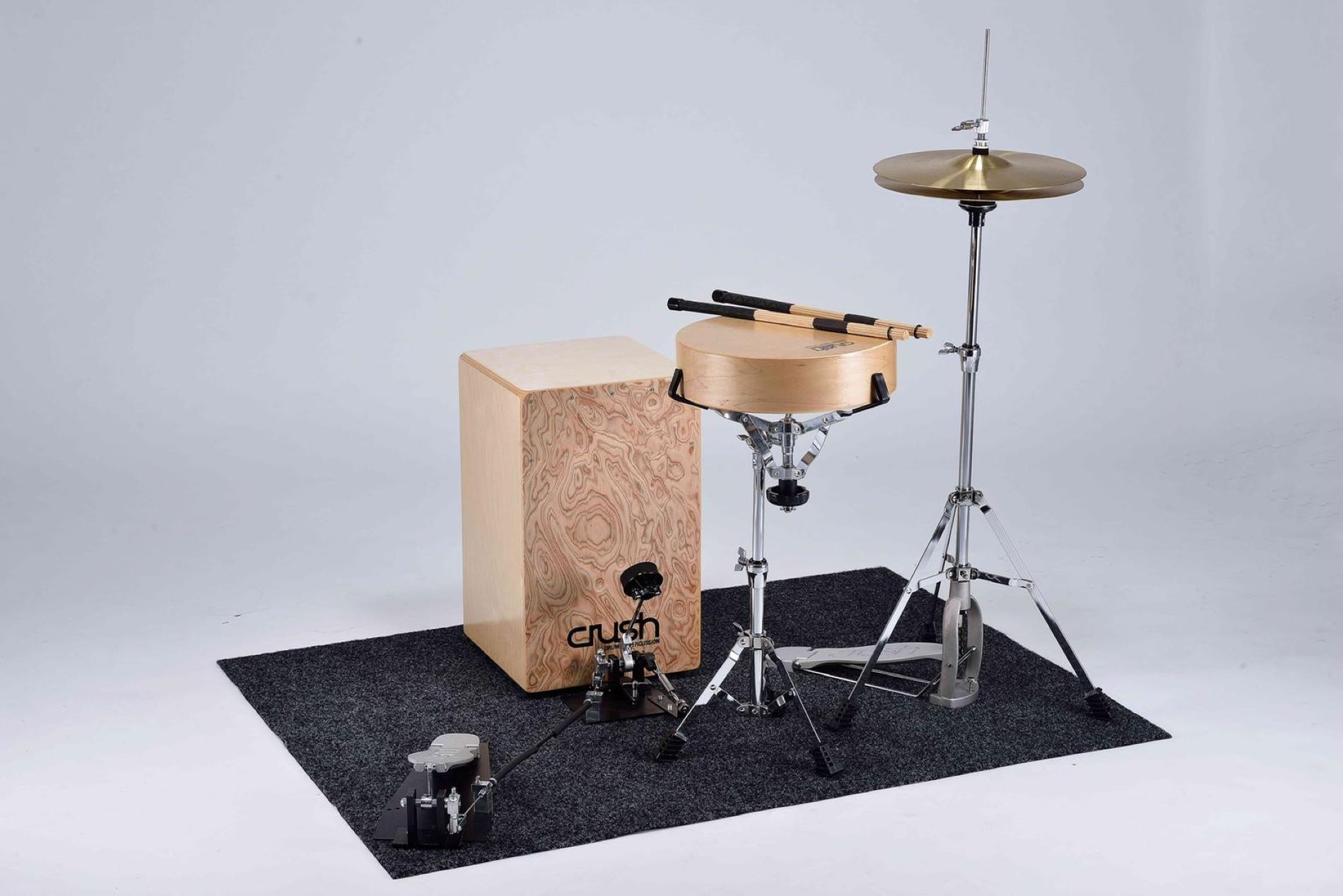

Drums
How To Play Cajon Drums
Published: February 7, 2024
Learn how to play cajon drums with our step-by-step guide. Discover essential techniques and tips for mastering the art of drumming. Start your rhythmic journey today!
(Many of the links in this article redirect to a specific reviewed product. Your purchase of these products through affiliate links helps to generate commission for AudioLover.com, at no extra cost. Learn more)
Table of Contents
Introduction
The Cajon drum, with its origins rooted in Afro-Peruvian music, has evolved into a versatile and popular instrument used in various musical genres worldwide. Its simple yet captivating sound has made it a favorite among musicians and enthusiasts alike. Whether you're drawn to its rhythmic allure or intrigued by its portability and accessibility, learning to play the Cajon drum can be a rewarding and enriching experience.
In this comprehensive guide, we'll delve into the art of playing the Cajon drum, exploring its history, basic and advanced techniques, and valuable tips for honing your skills. Whether you're a novice percussionist or an experienced drummer looking to expand your repertoire, this article aims to equip you with the knowledge and insights to embark on a fulfilling Cajon drumming journey.
The Cajon drum's unique construction, resembling a simple wooden box, belies its ability to produce a rich and diverse range of sounds. From deep bass tones to crisp snare-like slaps, the Cajon drum offers a dynamic sonic palette that can complement a wide array of musical styles. Understanding the instrument's anatomy and the fundamental principles of playing it lays the groundwork for mastering its rhythmic potential.
As we embark on this rhythmic odyssey, we'll explore the nuances of Cajon drumming, from the foundational techniques to the more intricate and expressive maneuvers. Whether you aspire to be the heartbeat of an acoustic ensemble or simply seek a creative outlet for rhythmic expression, the Cajon drum offers a gateway to a world of percussive possibilities.
Join us as we unravel the captivating world of the Cajon drum, where tradition meets innovation, and rhythmic exploration knows no bounds. Let's embark on a rhythmic adventure, embracing the heartbeat of the Cajon drum and discovering the boundless creativity it inspires.
Understanding the Cajon Drum
The Cajon drum, often referred to simply as the Cajon, traces its roots back to the coastal regions of Peru, where it emerged as an integral part of Afro-Peruvian music and culture. The word “Cajon” itself is derived from the Spanish term for “box” or “crate,” reflecting the instrument’s humble yet impactful presence.
At first glance, the Cajon drum appears deceptively simple, resembling a wooden box with a sound hole in the back. However, its unassuming exterior belies its remarkable versatility and expressive potential. Crafted from resonant wood such as birch or mahogany, the Cajon drum is designed to produce a diverse range of tones and textures, making it a percussive powerhouse in a compact form.
One of the defining features of the Cajon drum is its internal snare system, which consists of snare wires or strings stretched across the playing surface. This feature enables the Cajon to emulate the crisp, snare drum-like sound, adding depth and complexity to its sonic character. Additionally, the varying thicknesses of the front panel allow for nuanced tonal variations, from deep bass notes to sharp, percussive accents.
Traditionally, the Cajon was played while seated, with the musician striking the front panel with their hands and fingers to produce rhythmic patterns and accents. Over time, the instrument has undergone innovations, leading to the incorporation of foot pedals and additional percussion accessories, further expanding its sonic capabilities.
As the Cajon drum gained recognition on the global stage, its influence transcended traditional Latin and Afro-Peruvian music, finding a place in flamenco, acoustic ensembles, modern pop, and fusion genres. Its adaptability and portability have made it a sought-after instrument for musicians seeking a versatile percussion option for live performances and studio recordings.
Understanding the Cajon drum’s origins, construction, and sonic potential provides a solid foundation for exploring its rhythmic intricacies. Whether you’re drawn to its cultural heritage, fascinated by its acoustic charm, or enticed by its rhythmic allure, the Cajon drum invites you to embark on a rhythmic journey that transcends boundaries and resonates with the pulse of musical expression.
Getting Started with Playing the Cajon Drum
Embarking on your Cajon drumming journey is an exciting endeavor that opens the door to rhythmic exploration and creative expression. Whether you’re a seasoned percussionist or a newcomer to the world of drumming, the Cajon drum offers a welcoming entry point into the realm of rhythmic music-making.
Before diving into the intricacies of playing the Cajon drum, it’s essential to familiarize yourself with the instrument’s basic setup and playing posture. When seated on the Cajon, ensure that your back is straight and your posture is relaxed, allowing for unrestricted movement and comfortable playing. Positioning the Cajon between your legs, with the front panel facing outward, sets the stage for a comfortable and ergonomic playing experience.
As you acquaint yourself with the Cajon drum, take a moment to explore its various playing surfaces. The front panel, typically made of thick wood, serves as the primary striking area, producing distinct bass tones and percussive accents. Experiment with different hand positions and striking techniques to discover the nuances of sound that the Cajon drum can produce.
Basic hand techniques, such as employing open palms, fingertips, and the sides of your hands, allow for a diverse range of sounds, from resonant bass tones to crisp snare-like slaps. By varying the intensity and angle of your strikes, you can unlock a spectrum of rhythmic textures, adding depth and dimension to your playing.
Furthermore, familiarize yourself with the concept of dynamic control, which involves modulating the force and speed of your strikes to achieve varying levels of volume and expression. This fundamental skill lays the groundwork for crafting dynamic and engaging rhythmic patterns on the Cajon drum.
As you embark on your Cajon drumming journey, remember that patience and persistence are key virtues. Building a strong foundation through consistent practice and exploration of rhythmic patterns will set the stage for your growth as a Cajon player. Embrace the process of learning and allow yourself the freedom to experiment and discover your unique rhythmic voice within the captivating world of the Cajon drum.
Basic Cajon Drum Techniques
Mastering fundamental techniques is essential for developing a strong rhythmic foundation on the Cajon drum. These techniques form the building blocks for creating diverse rhythmic patterns and expressive performances. Whether you’re new to percussion or seeking to refine your skills, familiarizing yourself with basic Cajon drum techniques is a pivotal step in your musical journey.
- Bass Tones: Producing resonant bass tones on the Cajon drum involves striking the lower central area of the front panel with the base of your palm or a relaxed fist. Experiment with varying degrees of force and hand positioning to achieve deep, full-bodied bass tones that serve as the rhythmic heartbeat of your performance.
- Snare-like Slaps: Emulating the sharp, snare drum-like sound on the Cajon requires precision and control. Utilize your fingertips and the edge of your hand to strike the upper corners and edges of the front panel, generating crisp, percussive accents reminiscent of a snare drum’s response.
- Ghost Notes: Incorporating ghost notes adds subtle embellishments and intricacy to your rhythmic phrases. Lightly tapping the front panel with your fingertips produces delicate, muted notes that contribute to the overall texture and groove of your playing.
- Open Tones: By using an open palm or the entire surface of your hand, you can create open tones that yield a warm, resonant sound. Experiment with different hand positions and striking angles to explore the tonal variations achievable through open tones.
- Accents and Dynamics: Mastering dynamic control is crucial for infusing your Cajon drumming with expressive flair. Practice varying the intensity and velocity of your strikes to achieve contrasting dynamics, allowing your rhythmic phrases to ebb and flow with captivating energy.
As you delve into these fundamental techniques, remember that consistent practice and attentive listening are key to honing your skills. Embrace the process of exploration and discovery, allowing yourself the freedom to experiment with different combinations of techniques and rhythmic patterns. By cultivating a strong command of basic Cajon drum techniques, you pave the way for engaging performances and rhythmic expressions that resonate with musical depth and vitality.
Advanced Cajon Drum Techniques
Exploring advanced techniques on the Cajon drum opens up a world of expressive possibilities, allowing you to elevate your rhythmic performances to new heights. These techniques, characterized by their intricacy and finesse, add depth and nuance to your playing, enabling you to craft dynamic and captivating rhythmic experiences.
- Rolls and Flams: Incorporating rolls and flams into your Cajon drumming repertoire introduces fluidity and embellishment to your rhythmic phrases. Experiment with rapid finger movements and controlled wrist actions to execute smooth rolls and flams, infusing your playing with a sense of fluid motion and rhythmic complexity.
- Heel-Toe Technique: The heel-toe technique, borrowed from drum kit playing, offers a versatile approach to producing rapid, alternating strokes on the Cajon drum. By employing the heel and toe of your foot in a fluid, rocking motion, you can achieve rapid-fire rhythms and intricate patterns, expanding the rhythmic vocabulary at your disposal.
- Brush Techniques: Introducing brush techniques to your Cajon drumming adds a textural dimension, akin to the nuanced sounds of brushes on a snare drum. Utilize soft-bristled percussion brushes to create delicate swishing sounds and subtle accents, enhancing the expressive range of the Cajon drum.
- Layered Rhythms: Mastering the art of layered rhythms involves seamlessly integrating diverse techniques and patterns to create multidimensional rhythmic compositions. Experiment with combining bass tones, snare-like slaps, and ghost notes in intricate, interwoven patterns, resulting in captivating and elaborate rhythmic tapestries.
- Percussive Accessories: Incorporating percussive accessories such as shakers, tambourines, or cymbals into your Cajon drum setup allows for expanded sonic textures and rhythmic possibilities. By integrating these elements into your playing, you can create dynamic, hybrid percussion arrangements that enrich your musical expressions.
As you venture into the realm of advanced Cajon drum techniques, approach your practice with patience and a spirit of exploration. Embrace the nuances of each technique, allowing yourself the freedom to experiment and innovate. By integrating advanced techniques into your Cajon drumming vocabulary, you enrich your rhythmic palette, unlocking a world of expressive potential and musical creativity.
Tips for Improving Your Cajon Drum Skills
Refining your Cajon drum skills is a journey of continuous growth and discovery, marked by dedication, perseverance, and a spirit of musical exploration. Whether you’re a novice embarking on your rhythmic odyssey or a seasoned player seeking to expand your proficiency, these tips offer valuable insights to enhance your Cajon drumming prowess and elevate your musical expressions.
- Consistent Practice: Dedicate regular time to practice and explore rhythmic patterns on the Cajon drum. Consistency is key to developing muscle memory, refining techniques, and internalizing rhythmic concepts, ultimately leading to greater fluency and expressiveness in your playing.
- Active Listening: Engage in active listening to a diverse range of musical styles and genres, paying attention to the rhythmic nuances and percussive elements within the music. Drawing inspiration from varied musical influences enriches your rhythmic sensibilities and broadens your creative horizons.
- Collaborative Jamming: Participate in collaborative jam sessions with other musicians, exploring improvisational interactions and rhythmic dialogues. Jamming with instrumentalists across different disciplines fosters musical adaptability and expands your rhythmic vocabulary through spontaneous musical exchanges.
- Video Analysis: Record and review your Cajon drum performances through video recordings, allowing for self-assessment and constructive critique. Observing your playing from an external perspective provides valuable insights into technique, posture, and expressive nuances, facilitating continuous refinement of your skills.
- Exploration of Styles: Embrace the exploration of diverse musical styles and rhythmic traditions, from flamenco and Latin grooves to contemporary fusion genres. Immersing yourself in varied musical idioms cultivates versatility and adaptability, enriching your rhythmic interpretations and creative adaptability.
- Dynamic Expression: Focus on infusing your Cajon drumming with dynamic expression, utilizing contrasting volumes, accents, and rhythmic textures to convey emotive depth and musical storytelling. Embrace the ebb and flow of dynamics to create engaging and evocative rhythmic narratives.
Embrace these tips as catalysts for your rhythmic growth, allowing them to inform and inspire your Cajon drumming journey. By integrating these practices into your musical endeavors, you embark on a path of continual improvement, artistic enrichment, and the joyful pursuit of rhythmic mastery on the Cajon drum.
Conclusion
As we conclude our exploration of the captivating world of the Cajon drum, it becomes evident that this humble yet powerful instrument holds boundless potential for rhythmic expression and musical creativity. From its Afro-Peruvian origins to its global resonance in diverse musical genres, the Cajon drum embodies a rich tapestry of cultural heritage and rhythmic allure.
Throughout this journey, we’ve delved into the fundamental principles and advanced techniques that define Cajon drumming, uncovering the intricate artistry and expressive depth inherent in this versatile percussion instrument. Whether you’re drawn to its resonant bass tones, crisp snare-like slaps, or the rhythmic tapestries woven through layered patterns, the Cajon drum invites you to embark on a rhythmic odyssey that transcends boundaries and resonates with the pulse of musical expression.
Aspiring and seasoned musicians alike are encouraged to embrace the Cajon drum as a gateway to rhythmic exploration, collaborative musical dialogues, and personal creative expression. Its portability, adaptability, and expressive range make it a compelling companion for acoustic ensembles, live performances, and studio recordings, offering a rhythmic heartbeat that enriches musical compositions and captivates audiences.
In the spirit of continual growth and artistic enrichment, the tips and techniques presented serve as guiding beacons for honing your Cajon drum skills, fostering a deeper connection with the instrument and expanding your rhythmic vocabulary. Through consistent practice, active listening, collaborative jamming, and dynamic expression, you cultivate a rhythmic sensibility that resonates with musical depth and vitality.
As you embark on your Cajon drumming journey, remember that each strike of the hand, each nuanced technique, and each rhythmic narrative woven on the instrument contributes to a vibrant tapestry of musical expression. Embrace the rhythmic adventure that the Cajon drum offers, allowing its heartbeat to synchronize with your own, and infusing your musical endeavors with the captivating spirit of percussive creativity.
May the rhythmic pulse of the Cajon drum inspire you to explore, innovate, and express, as you journey through the rhythmic landscapes of musical discovery and creative fulfillment.


